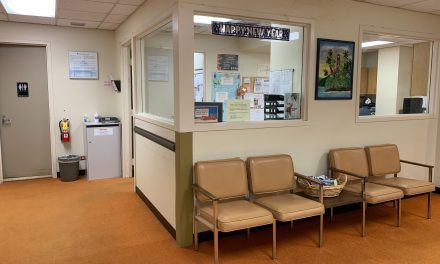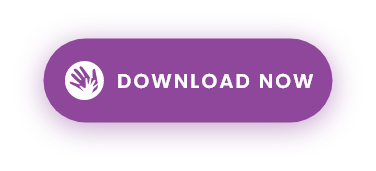Patient scheduling is one of the most common tasks that anyone with a practice does on a daily basis. But this seemingly simple task is important for several reasons. It forms the backbone of the structure of your day, and also affects your bottom line. Messy patient scheduling can have a domino effect, starting with you losing your time. On a larger scale, you risk losing out on patients who may find the scheduling subpar and turn to another physician or pediatrician instead. Read up on how to schedule patients effectively to make the most of your time and theirs.
5 Tips To Schedule Patients Effectively
Establish A System Of Sending Appointment Reminders
Setting up a way to remind patients of an upcoming appointment is a must. This is even more important for pediatricians. Parents are constantly shuffling between their own tasks and looking after a young child. In all that chaos, it can be exceedingly easy to forget about an appointment or vaccination schedule. As a practicing doctor, you know how inconvenient and costly a no-show can be, more so if you have an active waiting list at a busy practice. Putting a reminder system in place gives them that much-needed reminder while also ensuring your time doesn’t get wasted waiting for a no-show.
But if you’ve immediately thought about getting someone at the front desk to make a phone call reminder, think again. You need to make use of technology for this task; it not only frees up time for your staff but also eliminates human error. The wrong call to the wrong patient can not just prove to be costly, but also result in a lot of unnecessary chaos. Technology in medicine has proved beneficial, and an appointment software is one of those benefits.

You need to turn to technology to help you with patient scheduling.
You can choose from a range of software to use, and can even customize the message you want to send out. Opt for an automated message or email, or go a step further to opt for an automated phone call as well. Set it up in a way that the software sends a message a week before the appointment, and then a day before it. Include your cancellation and rescheduling policy in the reminder, giving patients a way to cancel or reschedule by responding directly to it.
Consecutive Scheduling From Noon
There are measures you can take to reduce the number of no-shows. But can you really help it when someone doesn’t show up nonetheless? No-show patients are unavoidable, but knowing how to schedule patients effectively can help you better deal with it. Use midday or noon as your starting point, and book appointments from noon forward, and noon backward. For example, fill in the hourly slot of 11 a.m. to noon first. Then move backward (10 a.m. to 11 a.m., 9 a.m. to 10 a.m.,) and forward (12 p.m. to 1 p.m., 2 p.m. to 4 p.m.).
This helps to reduce scattered blocks of no-show patients throughout the day. It fills up the bulk of your day so that you can use empty slots for staff meetings, catch up with paperwork, let your staff off early, and reduce overhead costs or take a break from work.
Create A Patient Waiting List
Keeping an active patient waiting list is a way to deal with empty appointment slots, and is part of how to schedule patients effectively. But again, you need to use technology for this since you can’t really expect to grab a phone and rapidly ring up patients. Use a software or program that can automatically send out a text message to the patients on the waiting list when a slot opens up. Whoever confirms first will get the slot, after which the rest of the patients can be informed that it’s no longer available.
Sending out a pre-set message to an entire group is much more efficient than calling up people one by one. It frees you up to better focus on other tasks at your practice and improves efficiency as well.
Prioritize Your Appointments
Every appointment could take a different amount of time depending on what the patient is there for. Even something as small as a vaccination could take longer than expected if your patient throws a fuss. But, you can prioritize the appointments by considering factors such as the level of care and treatment they require, and approximately how long the appointment could take.
You can do this by using software or an online scheduling system that gives patients a short form to fill. This way, they fill out information on their condition and you can then understand how long it could take.
An additional step to prioritizing your appointments is recognizing when you may not need an in-person appointment at all. Some patients may just book an appointment to discuss something harmless that they’re concerned about. This is especially true with parents, particularly new parents, who tend to worry at every slight thing going wrong with their baby. You could be better off handling these issues over a telephonic consultation, or better, with a video call. Telemedicine gives us apps like ImmunifyMe with end-to-end encryption for teleconsultations that can help you with how to schedule patients effectively.
Enable Patients To Self-Schedule Appointments
The easiest way to schedule patients effectively is to completely eliminate the hassle of scheduling by taking it off your shoulders. You can allow your patients to book appointments themselves by using a software, program, or app. This will drastically improve efficiency, as well as leave you with happy patients – research shows that most people prefer scheduling their own appointments online!
Here’s an example of how this works in order to understand it better. If you use an app like ImmunifyMe, you fill in your dates and slots of availability, as well as block slots when you want to be free. Your patients will be able to see and book the free slots, all from the convenience of a mobile phone. There’s really nothing to it, and yet it leaves you with so many benefits.

Several patients will be comfortable booking their appointments online.
Conclusion
Improving the way you go about patient scheduling will not only leave you with a more efficient practice but also greatly improve your equation with your patients. If telemedicine and easy appointment management seem like something you’d like, download the ImmunifyMe app. It can help you make your practice more efficient, just like effective patient scheduling can.
FAQs On How To Schedule Patients Efficiently
What Are The Different Appointment Scheduling Methods?
The 5 appointment scheduling methods are time-slot scheduling (patients choose from a list of available timeslots), wave scheduling (patients arrive in waves and are seen according to when they arrive), and open booking (clients are told to come during a broad time range and are seen when they arrive).
Why Is It Important To Schedule Patient Appointments Correctly?
Good patient scheduling helps you utilize your time and resources while also making things convenient for your patients. Messy scheduling leads to a lot of confusion, and can also drive patients away if they’re unhappy with their experience.
What Questions Should You Ask When Scheduling A Patient Appointment?
An important question when scheduling a patient appointment is what ails them. You can also ask them whether this will just be a scheduled appointment (for a vaccination) or not.
What Is The Most Important Consideration When Scheduling A Patient Appointment?
Maintaining patient confidentiality is the most important consideration when scheduling a patient appointment. Other considerations are why they need an appointment, if they need urgent care, or if a teleconsultation would be better.






